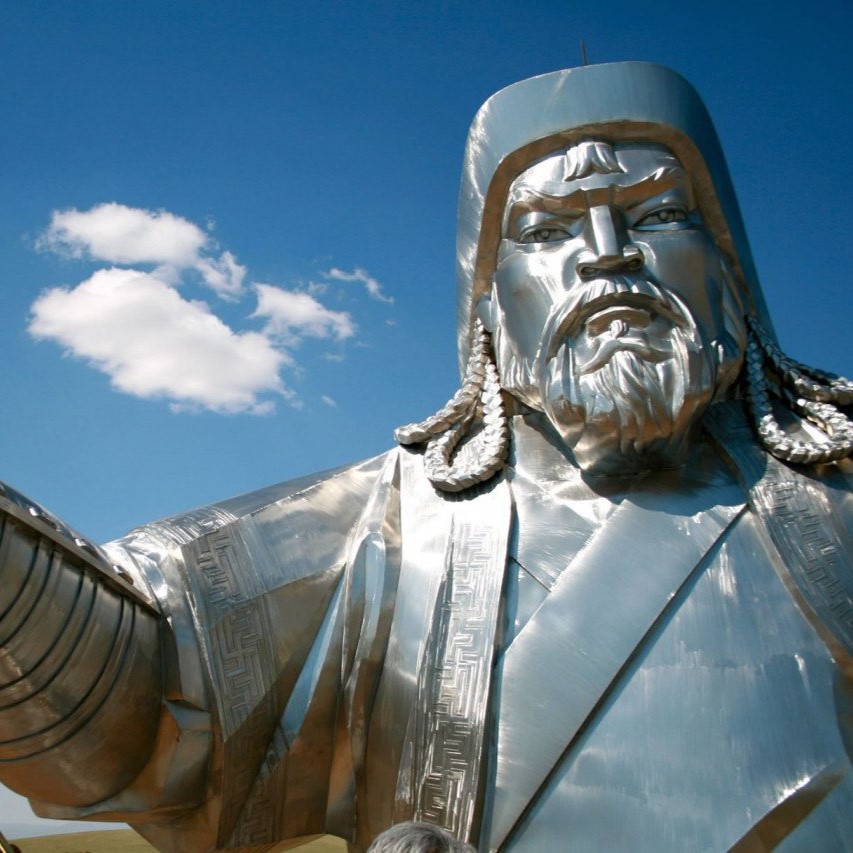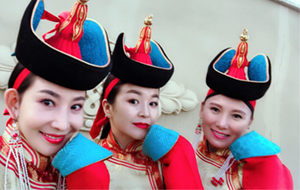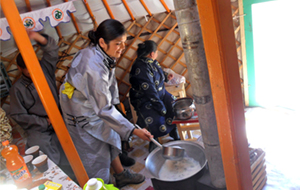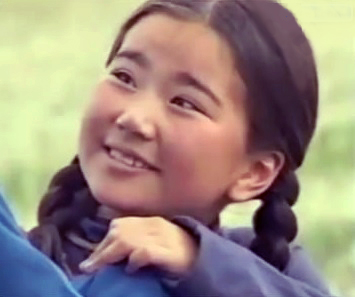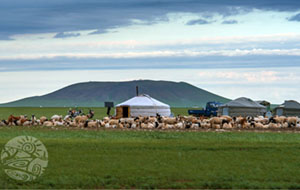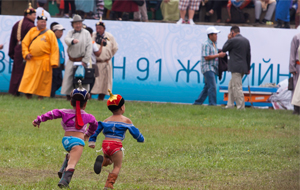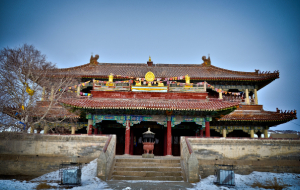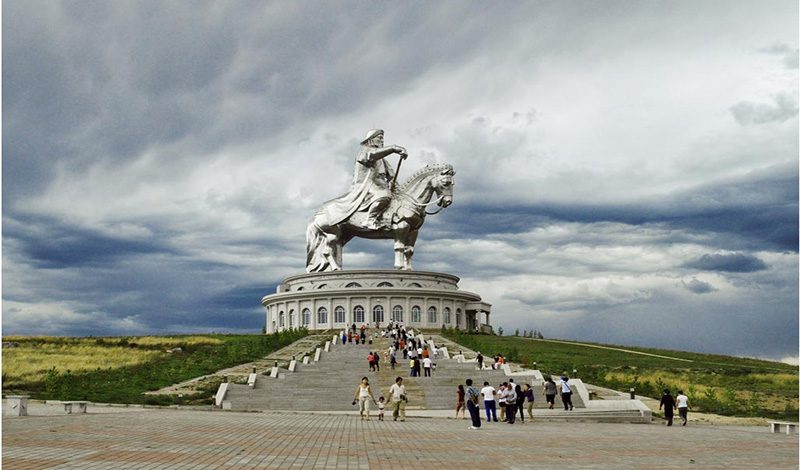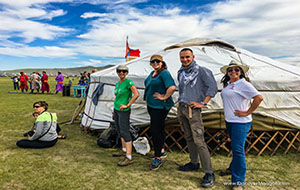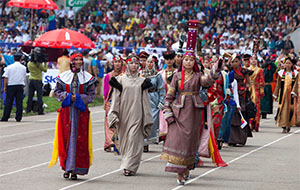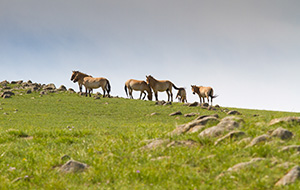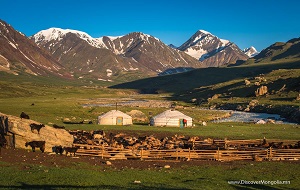1. Too big to handle empire turned into too many small units
Upon the collapse of the Yuan Dynasty (find out more about the Yuan Dynasty) in 1368, the Mongolian Empire became unstable mainly due to internal conflict and intense competition for power among the Golden Horde princes. Because the empire occupied such vast land, it was hard to overlook what was happening at the western tip of the empire while the emperor was residing at the eastern end, for instance. Intense competition for the throne doubled with logistical barriers brought up many khanates* led by some self-declared khans across the empire. Therefore, the period of 1368 - 1634 is dubbed as the Baga (means minor and opposite of great) Khans Era in the Mongolian history. During the stipulated period, 22 different khans managed to hold the throne while Genghis Khan stayed in power for 37 consecutive years and Kubilai Khan for 34 years.
Baga Khans Era was such an intense, yet interesting era that a TV series of 20 episodes was released on the topic a couple of years ago.

2. Fame did not last forever
While Mongolian khans were busy fighting with each other internally, another nomadic tribe called Manchurians or Manchus were gaining strength to the east of Mongolia and northeast of China. They managed to disrupt the hundreds of years of rule of the Great Ming Dynasty which took power after the collapse of Kubilai Khan’s Yuan Dynasty in China. However, because of the lack of qualified military or administrative leaders to run as vast countries like China, the Manchus or Qing Dynasty opted for co-operating with the Chinese and assigning former Chinese leaders to play the key roles.
Upon figuring out how to deal with the potential internal revolts, Manchus also wanted to make sure that their leadership would not be challenged or interrupted by external forces like the Mongols who had been famous for their aggressive attacks. Therefore, Manchus started using diplomatic tactics with Mongol khans such as encouraging inter-marriages from the very beginning. Speaking of Manchi princess, not too far from the Terelj National Park, which is only 50km off Ulaanbaatar city, there is a historical site called Princess Temple which used to be the residence of a Manchu princess married to a Mongolian noble.**
Discover our Gorkhi Terelj national park and 13th-century site tour here.

Later in the 1600s, Manchus also used subtle political tactics to convert Mongol nobles into their side by bestowing them various titles and promising them different rewards. Their tactics were not always neat and diplomatic, facts reveal to us that they utilized a significant dose of threat and torture to make Mongols obey their orders, too. In the National History Museum of Mongolia, there is a whole section dedicated to displaying numerous ways Manchus tortured Mongols to oppress.
Passing of the last Golden Horde khan Ligden in 1636, and the Qing Dynasty rise in 1644, made the southern part of Mongolia (a.k.a Inner Mongolia) vulnerable to the external occupation. Although then one of the most powerful, if not the most, dynasties in the world - Qing Dynasty - overtook all divisions of Mongolia by the end of the 1700s, southern Mongolia was evidently the most vulnerable zone to fall under Qing influence as they were right at the border.
As you might have observed, the name Inner Mongolia was derived from how Manchus called the southern part of Mongolia, so was the name Outer Mongolia. Mongolia was not the only nation occupied by the Qing Dynasty, but also Tibet, Nepal, and Uighur.
3. Influence of World Wars on Mongolia’s independence
After almost 300 years of rule, Qing Dynasty eventually came to an end in 1911 due to a massive Revolution in China.
Mongols also managed to get rid of their Manchu administrators with the help of Russians, who themselves were divided into two political mainstreams, in 1911. Yet, unfortunately, such liberation in Outer Mongolia could not help much in liberating their fellow citizens in Inner Mongolia although they were the ones who played a leading role in the 1911 political shift in Outer Mongolia.
Naturally, Chinese 1911 revolutionary leaders insisted they would retain all the territory, including Outer Mongolia, occupied under the Qing Dynasty. Hence, they did not accept the independence of Outer Mongolia in 1911. Chinese reluctantly accepted the independence of Mongolia merely after the Second World War as a consequence of a trilateral meeting between British prime minister Winston Churchill, Soviet premier Joseph Stalin, and President Franklin D. Roosevelt early in February 1945. As the mentioned leaders were agreeing on post-war world order, “the Soviet leader Joseph Stalin asked his wartime allies, the United States and the United Kingdom, to consent to Mongolia maintaining its “status quo” after the war, and obtained their agreement to this innocuous proposition. It was only later, in the summer of 1945, that it became clear what Stalin meant by the “status quo,” when he told the Chinese – who had not participated in the Yalta conference and were not consulted about its decisions – to recognize Mongolia’s independence.
Multiple reasons could have prompted Stalin to advocate for Mongolia’s independence at the time. However, because there are not really settled reasons to push forward, I shall leave it here at this point and would like to invite you to revisit our blog for further investigation on this topic shortly after the new year arrives.
So, in brief, a series of internal and external rise and fall in Mongolia caused its southern part (a.k.a Inner Mongolia) to remain as a part of China. So, to answer the questions posed at the beginning of this article, yes Inner Mongolians and Mongolians used to be one nation; however, unfortunately, due to historical events and their lack of political power at the time, they could not stay together as one nation. Obviously, due to its integration to China, Inner Mongolia has turned into a fusion of the two cultures while Mongolia has been experiencing its ups and downs on its own terms.
Useful information:
* When Travel To China & What Things To Do In China in 2019
* Shanghai tours trip with Discoverchina as it offers easy planning and best prices
 Chat with Us on WhatsApp
Chat with Us on WhatsApp














